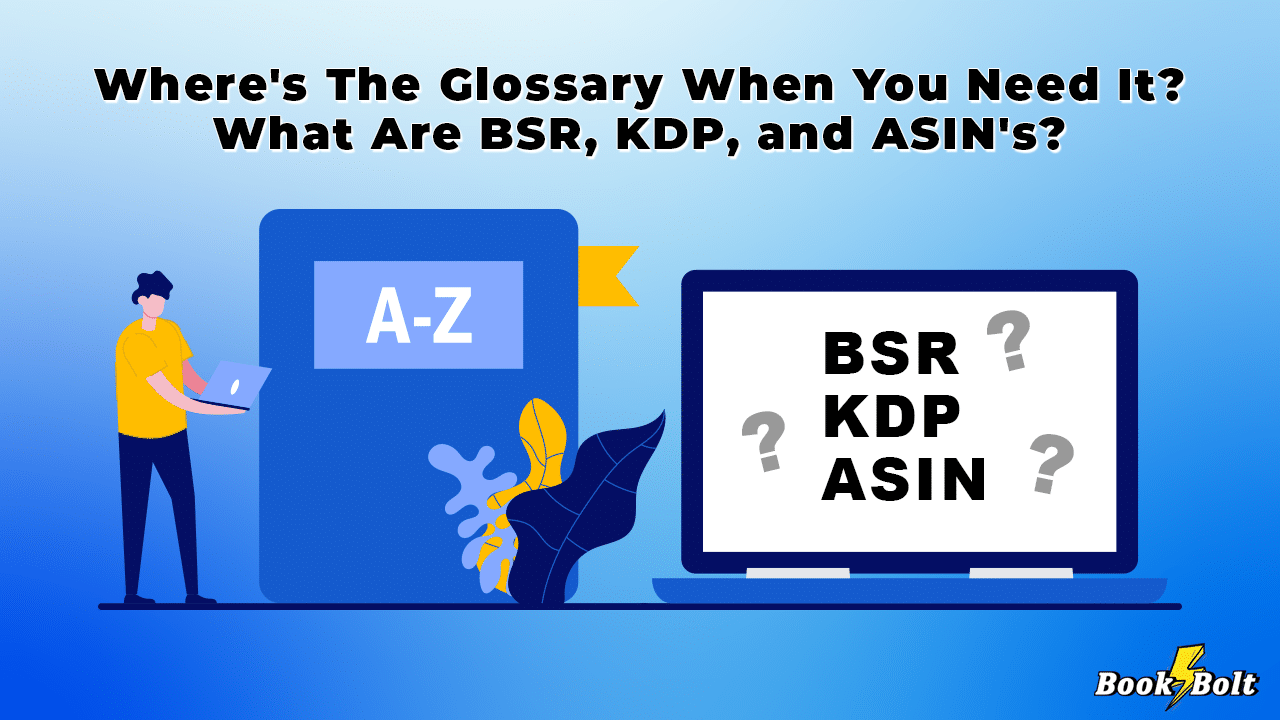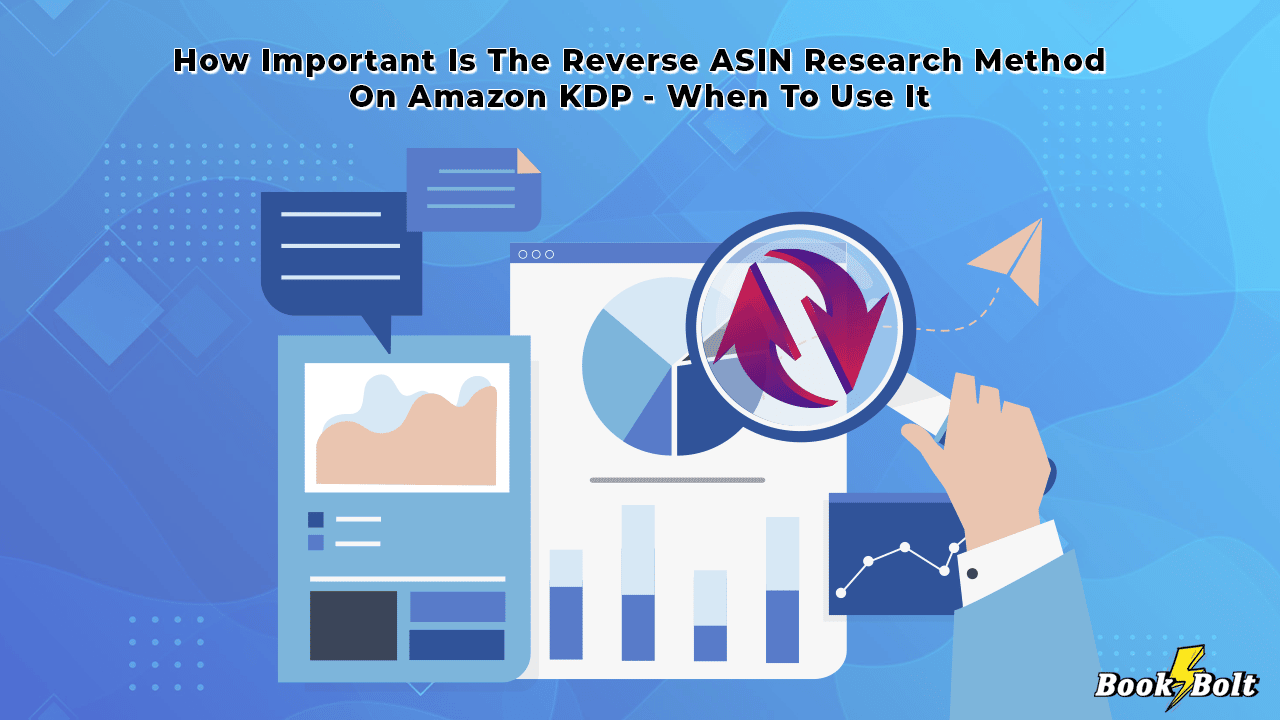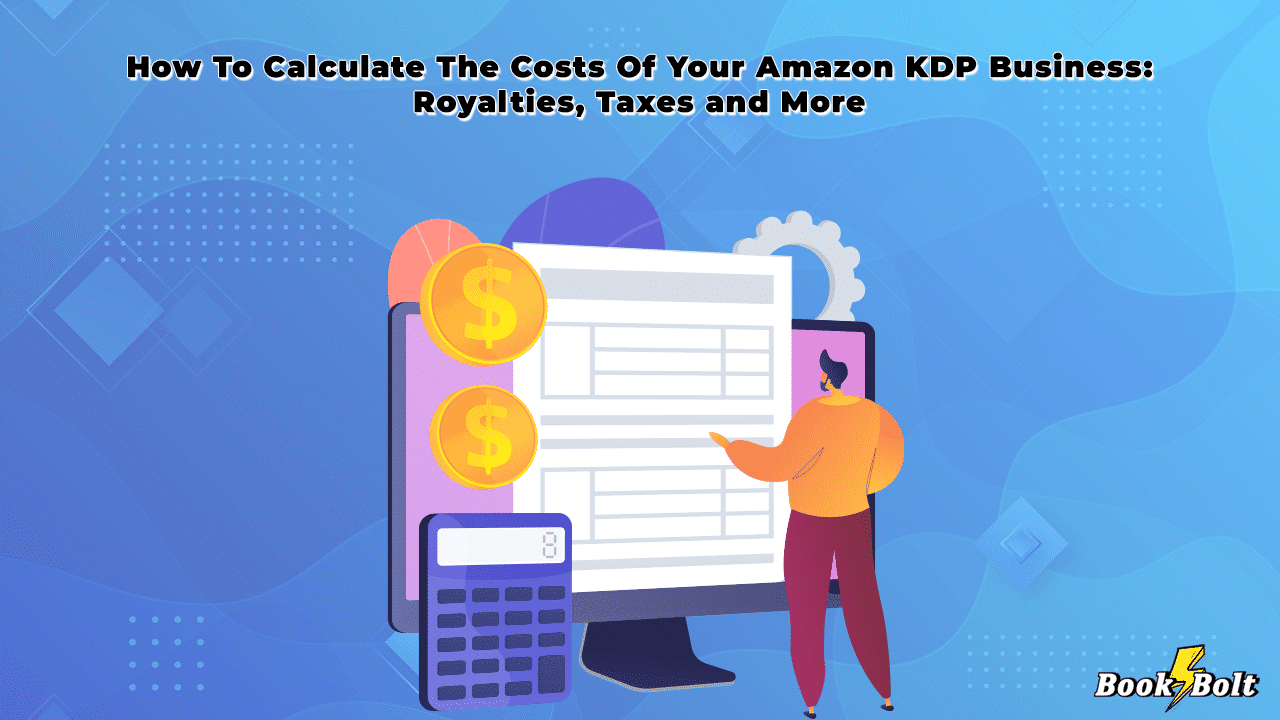
With a busy Amazon KDP business, it’s easy to get lost in the workflow and forget to brush up on the basics.
We’ve scoured the catacombs of the BookBolt blogs and gathered a few specifically to help strengthen the foundation of your enterprise. This week, we’re going to look back at important terminology and financial essentials. You can absorb this either from the summaries below or click on the header to read the entire article.
BASIC AMAZON KDP GLOSSARY
Navigating Amazon’s marketplace, especially for newcomers, involves understanding essential terminology like BSR, KDP, and ASIN, which are pivotal in selling low- or no-content books and managing a successful passive-income business on the platform.
Best Sellers Rank (BSR): BSR is a critical metric that Amazon provides to show how well products are selling relative to others within the same category. A lower BSR number indicates higher sales. It’s updated hourly to reflect recent and historical sales data, though recent sales weigh more heavily. BSR helps sellers understand their product’s performance in specific categories rather than across Amazon as a whole.
Kindle Direct Publishing (KDP): KDP is Amazon’s self-publishing arm that allows you to publish e-books, paperbacks, and hardcovers at no cost. It offers benefits such as retaining rights to your books, setting your own prices, and earning up to 70% in royalties. Publications through KDP can appear globally on the Kindle store within 48 hours. However, enrolling in KDP Select grants Amazon exclusive selling rights but provides additional promotional benefits and higher royalties through programs like Kindle Unlimited.
Amazon Standard Identification Number (ASIN): ASIN is a unique code assigned to each product on Amazon to efficiently manage and index inventory. For books, the International Standard Book Number (ISBN) serves as the ASIN. Sellers need an ASIN to list and sell products, with new ASINs generated for unique products not already sold on Amazon. This system helps protect brand integrity and simplifies product variation management, ensuring each product variant has its specific identifier.
KICKING YOUR COMPETITORS IN THE ASIN
The reverse ASIN research method is a powerful tool for Amazon KDP sellers, particularly useful for those dealing with low-content or no-content books. This technique involves using a product’s Amazon Standard Identification Number (ASIN) to uncover the keywords your competitors use effectively.
How It Works: To perform a reverse ASIN search, sellers use Book Bolt’s Book Scout. By entering a competitor’s ASIN, you can access detailed insights about the keywords driving traffic and sales to their listings.
Benefits of Reverse ASIN Research:
- Keyword Optimization: Identifies high-performing keywords that you might not be using but could drive significant traffic and improve your listing’s visibility.
- Competitive Analysis: Helps pinpoint gaps in competitors’ strategies, offering opportunities to target these areas and improve your rankings.
- Enhanced Advertising Strategies: Guides your PPC campaigns, focusing your advertising spend on the most effective keywords to maximize ROI.
Optimal Use Cases: This method is invaluable for both new entrants to the market and established sellers looking to boost underperforming listings or update their keyword strategies in line with current trends.
THE PRICE IS RIGHT, IF YOU KNOW HOW TO STRATEGIZE
Crafting an effective pricing strategy on Amazon KDP is crucial for maximizing profits from low-content or no-content books. Here’s a streamlined approach to setting the right price:
Royalties and Costs: Understand the relationship between your book’s list price and its associated costs. Amazon pays a 60% royalty on paperbacks minus printing costs, which vary by page count. For example, selling a 108-page paperback at $15 results in a $6.85 royalty after a $2.15 printing cost.
Pricing Strategies: There are two main pricing approaches:
- Starting Low: Initially pricing at Amazon’s minimum suggested price can boost volume but might imply lower quality.
- Market Average Pricing: Setting prices around the category average can balance visibility, affordability, and perceived quality, leading to more consistent sales.
Influence of BSR: Best Sellers Rank (BSR) affects visibility and sales. A strategic price point can improve your BSR, enhancing your book’s placement on Amazon’s search results, which boosts sales potential.
Adjusting Prices: Monitor sales data and BSR to decide when to adjust prices. If a low BSR is achieved through a price drop and sales increase, consider gradually raising the price to maximize profitability without sacrificing sales momentum.
THE COST OF DOING (A KDP) BUSINESS
Calculating the costs associated with your Amazon KDP business is essential for setting competitive prices and maximizing profits. Here’s how to understand and manage various costs related to selling books on Amazon KDP.
Key Costs to Consider:
- Printing Costs: These are variable based on the book’s specifications, such as page count, color vs. black and white printing, and the marketplace of sale. For example, a 104-page color paperback sold in the US at $14.30 might incur $8.13 in printing costs, leaving only $0.45 in royalties.
- Delivery Costs: While Amazon KDP boasts no upfront costs, delivery and printing fees are deducted from your royalties. Delivery costs are calculated based on the file size of your book, affecting your net earnings.
- Marketing Costs: Effective marketing is crucial for visibility and sales, yet it represents an additional cost. Budgeting around 10% of your revenue for marketing is typical, though this can vary greatly depending on your strategy.
- Book Tax: Compliance with tax regulations is mandatory. The amount of tax depends on whether you are publishing within the US or internationally, impacting the royalties received.
- Amazon Commission: Amazon takes a commission based on the selected royalty rate, which typically ranges from 60% for direct sales to 40% for expanded distribution.
Calculating Your Costs: To determine the total cost of selling a book, add up the delivery, printing, and any applicable taxes. For instance, if a book costs $4.70 to print and $0.16 for delivery, these costs subtract from your potential earnings, affecting your pricing strategy.
Example Calculation:
- Selling a book for $20 with 55 pages may lead to a $4.70 printing cost.
- Royalties would then be calculated as: (60% of $20) – $4.70 = $7.30.
Impact on ROI: To calculate your return on investment (ROI), subtract the total costs from your earnings. For example, if your costs (printing + delivery) are $4.86 and you earn $7.30 per book, you’d need to sell around 35 books to break even if your only profit per book was around $2.44.
Bookmark this article and use it as a cheat sheet to refer to as you go about your KDP business!



